Tropical water lilies
One prominent wildflower at the Brazoria National Wildlife Refuge on October 6th was the tropical water lily, Nymphaea elegans, which most would agree is elegant. The photograph above shows a group of those flowers opening. Next you have a me-and-my-shadow view of a mostly open flower:
And then you have a closer, more isolating, lower-angled, and limited-focus portrait:
© 2019 Steven Schwartzman



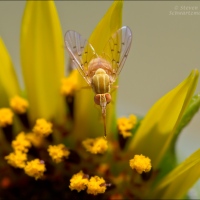
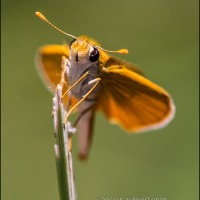
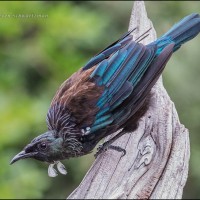
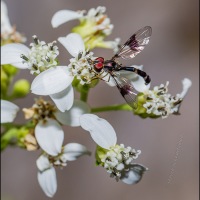
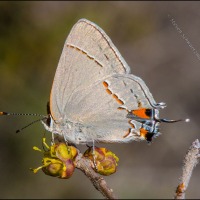
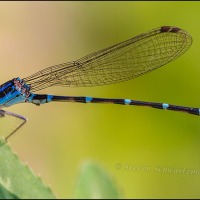
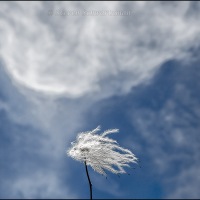
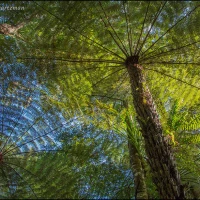

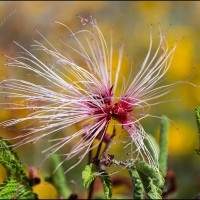
They stand so tall. Our water-lilies hug the water and should the water level drop, their stems are not strong enough to keep erect so they always float.
Steve Gingold
November 6, 2019 at 4:52 AM
Linda had made me aware of the distinction between “regular” water lilies and this species whose flowers stand tall above the water line. I wonder whether this kind can interbreed with the flowers-on-the surface kind, and if so, what behavior the result exhibits.
Steve Schwartzman
November 6, 2019 at 7:08 AM
Yes, I remember her post of one of these and remarking about the difference.
Steve Gingold
November 6, 2019 at 5:26 PM
It helped me to visit Brazoria with someone who knew the place and many of the things found there.
Steve Schwartzman
November 6, 2019 at 5:47 PM
Maybe someday you and Linda can be my guides. Something always gets in the way of my long distance travel plans.
Steve Gingold
November 6, 2019 at 5:53 PM
The time will come.
Steve Schwartzman
November 6, 2019 at 6:30 PM
I wouldn’t be surprised. You mention that they are tropical~ were they planted there, then?
melissabluefineart
November 6, 2019 at 7:13 AM
“Tropical” is part of the common name. The Wikipedia article about this species says that “it is found in Louisiana, Florida and Texas, in the United States, in Oaxaca in Mexico and in Antioquia in Colombia.” I don’t know where it originated and how it spread.
Steve Schwartzman
November 6, 2019 at 7:46 AM
I was hoping that that was merely just part of its name, or that you are far enough south for it to be part of its natural range. It is indeed elegant and lovely.
melissabluefineart
November 6, 2019 at 7:49 AM
From the beginning here, if I know that a species isn’t native where I find it, I don’t show it. Sometimes it’s photograph first, then try to identify. At Niagara Falls I suspected the prettiest kind of wildflower wasn’t native; I took some pictures just in case, but later my suspicion turned out to be true. Too bad.
Steve Schwartzman
November 6, 2019 at 7:57 AM
Of course~I should have thought of that, of course you wouldn’t.
It is too bad when lovely things turn out to be non-native. I continue to wonder if our stance on native will have to change, as our habitats change. We may well have to shift to what will survive and not what is indiginous.
With the inundation going on at IBSP I am sure we will lose some species of plants, but that will open the door to new species. Ones that can come with fins and snorkels, perhaps.
melissabluefineart
November 6, 2019 at 8:08 AM
I can think of a couple of knowledgeable people here who have a looser view of natives versus non-natives. One of them recently took the stance that in barren, eroding places in Austin, even non-native plants are better than no plants at all because they stabilize the ground and mitigate the effects of floods. People move, plants move.
Steve Schwartzman
November 6, 2019 at 8:42 AM
Absolutely, and conditions change.
melissabluefineart
November 7, 2019 at 8:11 AM
I was wondering the same. It is not your style to show a picture of an exotic species.
tonytomeo
November 18, 2019 at 12:23 PM
No, I still don’t knowingly show pictures of exotic species.
Steve Schwartzman
November 18, 2019 at 3:28 PM
Great photography as always, Steve! We do have water lilies in our northern climes, but never have I seen their flowers sticking out their heads so far above the water. That must be a characteristic of the tropical water lily.
Peter Klopp
November 6, 2019 at 8:29 AM
You’re right, it’s a characteristic of this species. The water lilies I was familiar with produce flowers that lie on the surface of the water.
Steve Schwartzman
November 6, 2019 at 1:03 PM
They made me think of water nymphs learning a synchronised swim routine.
susurrus
November 6, 2019 at 11:39 AM
The genus name Nymphaea certainly harmonizes with your vision of water nymphs.
Steve Schwartzman
November 6, 2019 at 1:46 PM
[…] previous post showed you water lilies at the Brazoria National Wildlife Refuge on October 6th. One adjacent span of water interested me […]
The water without the lilies | Portraits of Wildflowers
November 7, 2019 at 4:35 AM
I suspect most people have seen trees used as windbreaks, but your first photo proves that even the smallest plants can function in that way. It’s the lily pads (and perhaps some of their beneath the surface growth) that helped to create the distinction between the more-rippled water in the background, and the smoother, foreground water. The band of lilies tucked between two bands of water with different qualities isn’t just pleasing — it’s a result of the lilies themselves.
shoreacres
November 7, 2019 at 6:56 AM
You make a good point about the plants serving as windbreaks. I’d noticed the different degree of water waviness in the back compared to the front but hadn’t thought about accounting for the difference. Nor had I tried to explain the pattern in the following post, which you just commented on.
Steve Schwartzman
November 7, 2019 at 7:14 AM
Reading the water’s an essential skill for a sailor, and I was lucky enough to be introduced to the art by someone who was especially good at it. The habit of looking closely at water to see what information it held became so deeply ingrained that I still sometimes look with that ‘sailor’s eye.’ Now that I think of it, that may play into my preference for more natural photographs of water. ‘Soft’ water is hard to read; maybe I need to develop a different eye to appreciate it.
shoreacres
November 7, 2019 at 9:00 PM
By “soft” water I take it you mean the way water looks when a photographer has used a long exposure. What you say about having learned to read natural water may indeed explain your preference for it. I, on the other hand, don’t have your knowledge of natural water yet still usually prefer it. One reason may be the energy I sense in a high-speed image, with strange shapes forming and drops simultaneously moving in many directions.
Steve Schwartzman
November 8, 2019 at 6:09 AM
Truly elegant!
tanjabrittonwriter
November 10, 2019 at 6:35 PM
You suddenly made me realize that in French élégant and et les gants (and the gloves) sound the same.
Steve Schwartzman
November 10, 2019 at 7:29 PM
French has homophones, too!
tanjabrittonwriter
November 11, 2019 at 6:35 PM
Does it ever. Much more than English.
Steve Schwartzman
November 11, 2019 at 6:49 PM